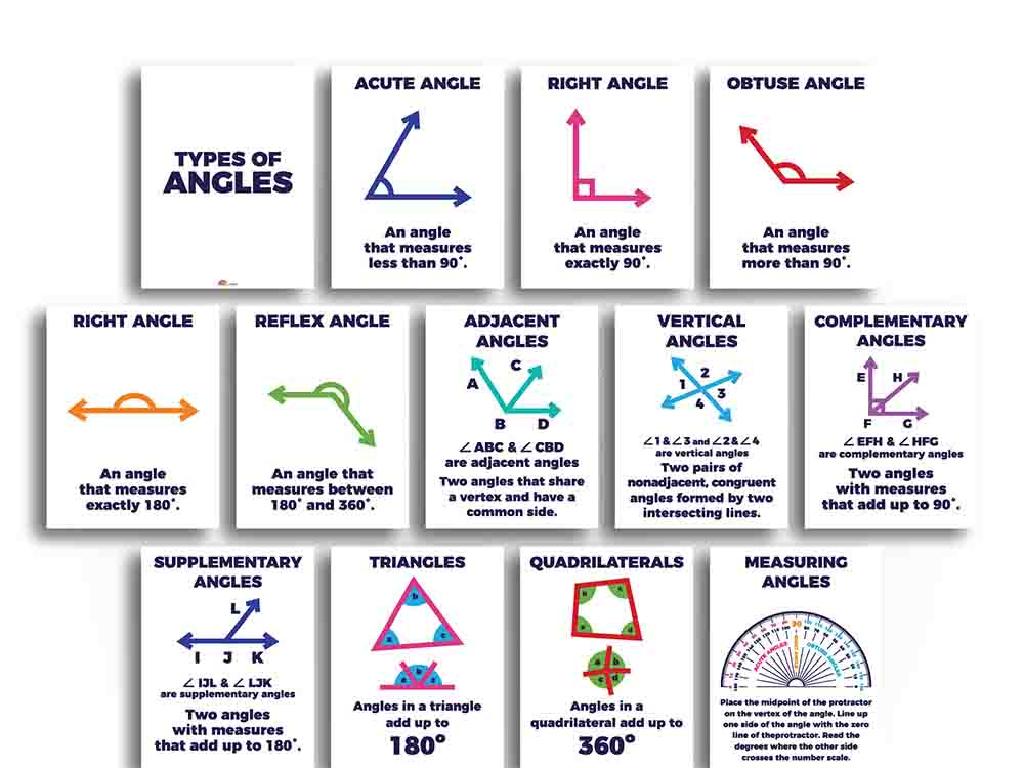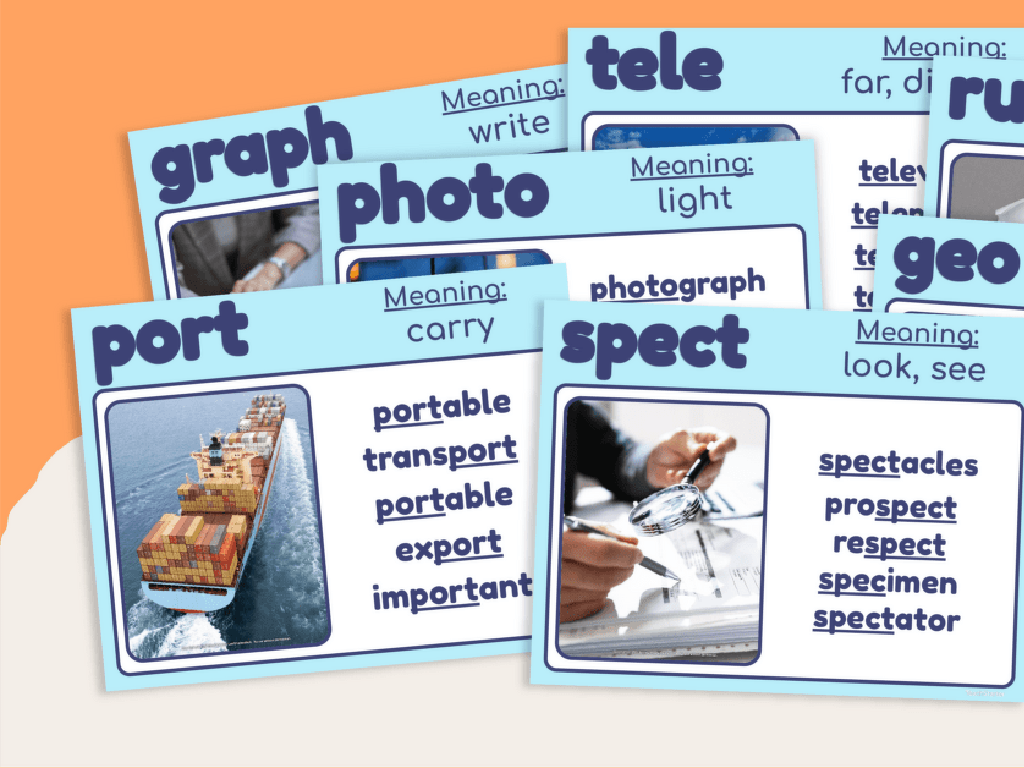Commas: Review
Subject: Language arts
Grade: Fifth grade
Topic: Commas
Please LOG IN to download the presentation. Access is available to registered users only.
View More Content
Commas: Mastering the Pause
– Why commas matter in sentences
– Commas help clarify meaning & separate ideas
– Recap: Commas’ basic rules
– Review rules like listing items & after intro phrases
– Examples: Commas in action
– Look at sentences from books & identify comma use
– Activity: Spot the comma needs
– Find sentences missing commas & explain why needed
|
This slide aims to reinforce the importance of commas in written English. Commas are crucial for clarity and to avoid misunderstandings. Start by discussing why commas are important, using examples of sentences with different meanings when commas are added or omitted. Recap the basic rules learned in the previous lesson, such as using commas in lists, after introductory phrases, or to set off nonessential information. Provide clear examples from familiar texts where commas are used correctly. Conclude with an interactive activity where students identify where commas are needed in provided sentences, explaining their reasoning. This will help solidify their understanding of comma usage in various contexts.
Why Use Commas?
– Commas clarify sentence meaning
– They separate ideas or elements
– Example: Misunderstanding without commas
– ‘Let’s eat grandma’ implies something unintended
– Example: Clarity with commas
– ‘Let’s eat, grandma’ correctly invites grandma to eat
|
This slide emphasizes the importance of commas in written English. Commas are crucial punctuation marks that help readers understand the intended meaning of a sentence by separating ideas or elements. Without commas, sentences can become confusing or convey a completely different meaning than intended. For example, the absence of a comma in ‘Let’s eat grandma’ suggests a cannibalistic action, while the presence of a comma in ‘Let’s eat, grandma’ correctly conveys an invitation to eat. It’s important to teach students to use commas correctly to avoid such misunderstandings. Have students practice by writing sentences that change meaning with and without commas.
Commas in Lists
– Commas separate list items
– Example: apples, oranges, bananas
– I bought apples, oranges, and bananas at the store
– Notice the comma before ‘and’
– This is the Oxford comma
– Also known as the serial comma, used for clarity
|
This slide introduces the use of commas in lists, which is a fundamental aspect of punctuation in writing. Emphasize the importance of using commas to avoid confusion and to list items clearly. The example provided should help students visualize how commas are used in a practical context. Highlight the Oxford comma, explaining that it is placed before ‘and’ in a list and is used to ensure clarity, especially in complex lists. Encourage students to practice by writing their own lists and checking each other’s work for correct comma usage.
Commas in Dates and Addresses
– Commas in dates: day, month, year
– Commas separate the day from the month, and the year from the rest of the sentence.
– Example: July 4, 1776, Independence Day
– It marks the day when the United States declared independence.
– Commas in addresses: street, city, state
– Commas help differentiate between the street, city, and state in an address.
– Example: 1600 Pennsylvania Ave, Washington, DC
– This is the address of the White House, where the U.S. President lives.
|
This slide is aimed at reviewing the use of commas in dates and addresses for fifth-grade students. Start by explaining the role of commas in separating the day from the month and the year in a date, and why it’s important for clarity. Use the example of Independence Day to provide a historical context and help students remember the concept. Then, discuss the use of commas in addresses, emphasizing how they separate the street, city, and state, which is crucial for mail delivery. The example of the White House is relatable and memorable for students learning about U.S. geography and government. Encourage students to practice by writing their own birthdates and addresses with proper comma usage.
Commas with Introductory Elements
– Use commas after introductions
– Introductory words, phrases, clauses
– Example: ‘After the show, we went…’
– ‘After the show’ sets the scene, comma then introduces the main action
– Comma placement is key
– Practice by identifying introductory elements
|
This slide is focused on teaching students the use of commas after introductory elements in a sentence. Explain that introductory elements can be a single word, a phrase, or a clause that leads into the main part of the sentence. Use the example provided to show how the comma after ‘After the show’ helps to separate the introductory phrase from the main action. Emphasize the importance of the comma in clarifying the sentence structure and meaning. Encourage students to practice by finding sentences in their reading books and identifying the introductory elements and the commas that follow them. This will help reinforce the concept and improve their writing skills.
Commas in Compound Sentences
– Use a comma before a conjunction
– When two complete ideas are connected with ‘and’, ‘but’, ‘or’, etc.
– Joining two independent clauses
– Each clause can stand alone as a sentence
– Example: Park visit plan
– ‘I wanted to go to the park, but it started to rain.’
– Comma placement is key
– The comma comes before ‘but’ in our example
|
This slide focuses on the use of commas in compound sentences, which are sentences made up of two independent clauses joined by a conjunction such as ‘and’, ‘but’, or ‘or’. It’s crucial for students to understand that each clause could be a sentence on its own. The comma is placed before the conjunction to indicate a pause and to clarify that two separate thoughts are being connected. The example provided should help students visualize the rule. Encourage students to create their own sentences and practice placing commas correctly. This will reinforce their understanding of the concept and improve their writing skills.
Commas with Direct Speech
– Commas separate spoken words
– Example: Direct speech usage
– ‘She said, ‘I’ll be there soon,’ before hanging up.’
– Commas inside quotation marks
– Notice placement: before & after the quote
– Practice with your own examples
– Create sentences using commas & quotes
|
This slide focuses on the use of commas in direct speech. Commas are crucial in separating the spoken part of the sentence from the rest of the text, providing clarity and understanding. When using direct speech in writing, it’s important to place commas inside the quotation marks to indicate where the speech begins and ends. An example is provided to illustrate this point. Encourage students to notice the placement of commas in relation to the quotation marks. As an activity, students can practice this punctuation by creating their own sentences that include direct speech, ensuring they place commas correctly. This exercise will help reinforce their understanding of the concept.
Let’s Practice Comma Placement!
– Comma Placement Exercise
– Analyze sentences for correct commas
– We’ll look at sentences and figure out where to place commas together
– Pair up for sentence creation
– Find a partner and think up sentences that need commas
– Use commas correctly in your sentences
– Make sure to place commas where they’re needed for clarity
|
This slide introduces an interactive classroom activity focused on the practical application of comma usage. Begin by writing sentences on the board without commas and engage the class in a discussion to decide where commas should be placed. Then, have students work in pairs to create their own sentences, ensuring they use commas correctly. This activity will help reinforce the rules of comma placement in a collaborative and hands-on manner. For the teacher: Prepare a list of sentences that are missing commas for the initial exercise. Provide guidance on comma rules as needed. For the pair activity, encourage creativity and provide examples of sentences that require commas, such as lists, compound sentences, or introductory elements. After the activity, review each pair’s sentences with the class to reinforce learning.
Class Activity: Comma Hunt
– Find commas in a book or article
– Share reasons for comma usage
– Explain why the author used commas in your examples
– Discuss meaning without commas
– How does the sentence change if you take out the commas?
– Reflect on the importance of commas
|
This activity is designed to reinforce the students’ understanding of comma usage by exploring real-world examples. Students should bring their favorite book or select an article, look for sentences with commas, and try to understand the author’s intent behind using them. They will share their findings with the class, explaining why the commas are necessary and how their absence could alter the meaning of the sentences. As a teacher, prepare to guide the discussion by providing additional examples if needed and emphasizing the importance of commas in writing clarity. Possible activities include comparing sentences with and without commas, creating a comma usage chart, or rewriting sentences to include proper comma placement.
Commas: Review and Closing
– Recap of today’s comma rules
– Importance of correct comma usage
– Commas help readers understand the meaning of sentences by breaking them into manageable parts.
– Homework: Craft a short story
– Include at least five commas to show different rules we learned.
– Use commas for clarity in writing
– Commas can change the meaning of sentences, so place them carefully!
|
As we wrap up today’s lesson on commas, provide a brief summary of the rules discussed, such as using commas in lists, after introductory phrases, and to set off clauses. Emphasize the importance of commas in preventing confusion and ensuring that the reader understands the intended meaning of the sentences. For homework, students should write a short story where they apply the comma rules learned. This will help reinforce their understanding and provide practice in using commas to enhance the clarity of their writing. Encourage creativity in their stories and remind them to proofread for correct comma usage. In the next class, we can have a few students share their stories to highlight the effective use of commas.





